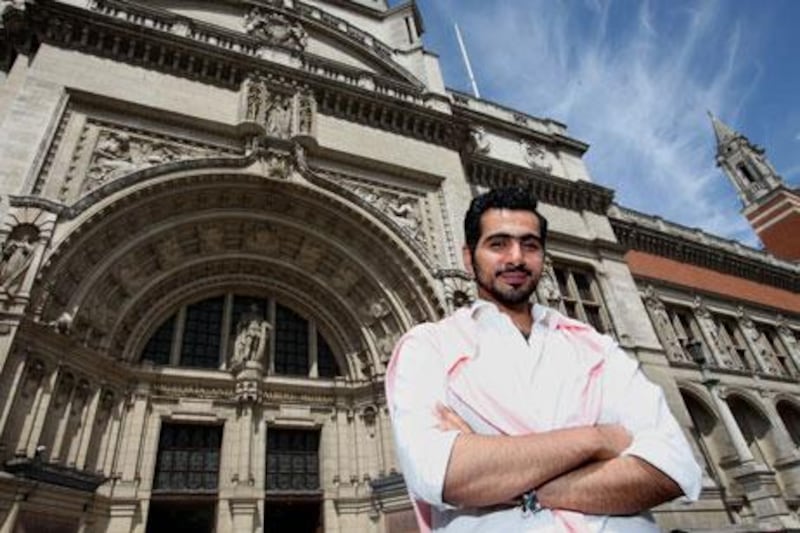When the unexpected email arrived from the Victoria & Albert Museum in London requesting that Helen Persson, the museum's curator of textiles in the Asian department, be allowed to view Sultan Al Darmaki's first-ever collection of women's shoes, the Emirati designer was careful to keep his cool.
As Persson scrutinised them, he continued to hold his excitement in check. It was only after she left, having asked Al Darmaki whether the V&A might be able to acquire the Lydia shoe to represent contemporary Middle Eastern fashion in its permanent collection, that he lost his cool.
"The entire team was very emotional about it," he says. "We were all in tears. When I first started, I thought that being a footwear designer was going to be a massive challenge - challenging the entire community, challenging culture and traditions. The support I received was amazing and this recognition from the V&A, it is a gift back to the UAE and to everyone who has supported the brand."
Now based in London, Al Darmaki is the first contemporary Middle Eastern designer to have his work picked up by the museum and the first Emirati to be in that position - some achievement for a designer just six months into his career.
He said yes to the V&A, of course: the museum describes itself as "the world's greatest museum of art and design", and it holds a collection of fashion and textiles rivalled only by the Costume Institute at New York's Metropolitan Museum. Al Darmaki's golden stilettos are in world-beating company: from mediaeval vestments and the 1673 wedding suit of King James II to rare couture pieces by the likes of Madame Vionnet, Charles Frederick Worth, Christian Dior, Cristóbal Balenciaga and John Galliano, only the most culturally significant pieces make it into this repository of fashion greatness.
"Helen kindly showed us around some of the treasures they have hidden behind closed doors in the V&A and some of the vintage shoes they have from the 1800s or from the first collections of Christian Dior or Manolo Blahnik," says Al Darmaki. "To have a pair of shoes sitting alongside some of those designers... You can't describe that feeling. It is a dream to us."
The V&A's new acquisitions will be revealed online at the end of August (at www.vam.ac.uk) and exhibited in the museum towards the end of this year. Meanwhile, a major shoe exhibition is on the cards for the V&A in the future, and Darmaki shoes will be part of it, sitting alongside outstanding examples of footwear, both antique and modern.
Should Al Darmaki become as synonymous with fabulous shoes as Blahnik, it will be both in spite of and because of the care he has taken to protect and live up to his family's name. As he explains it, there are "no-go" areas in the Middle East, and using a family name in the footwear industry is one of them.
"We have to take all measures to make sure we don't use the name in an offensive way, so not using it on the shoes themselves, on the boxes and so on. But the V&A came as a message to whoever doubted our progress that I'm not going to put my family name down; I'm proud of what has happened."
It is partly this cultural sensitivity that led to the final choice of shoe for the V&A's collection. "They chose the Lydia for the story behind it," explains Al Darmaki. "A lot of people have perceived the shoes to be a Roman-inspired design, but the reality behind it is the gold metallic burqa, which veils the woman's face in certain parts of the Middle East. I remember my grandma: I've never seen my grandma's face - she always had her burqa on. To me it was very intriguing. There's an Arabic saying that I absolutely love: it says that the eye wants to see what's covered, and that's what I tried to do with Lydia by reinterpreting the concept in a footwear design."
Al Darmaki's next collection, for spring/summer 2012 (to be launched next month), has an equally Middle Eastern bent, being inspired partly by the late Ottoman empire. A sneak preview last week of what is a rather stunning collection confirmed an approach to design that seems likely to chime with the V&A's own collections.
Al Darmaki hopes his story will inspire other designers in the UAE. After all, he said, "who would have thought that a Bedouin boy from Al Ain would move to London and one day have a pair of shoes in the V&A?"





